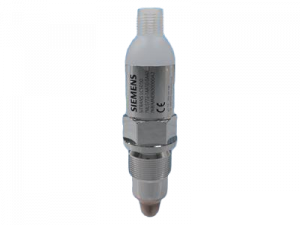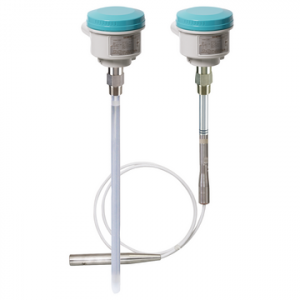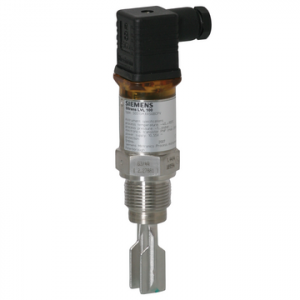Level guards
Level switches are essential to ensure safe operation and prevent overfilling or dry running in various industrial applications. Our level switches are used in tanks and containers to monitor critical levels of liquids and solids, especially in water and wastewater management, chemical industry and energy. By reacting quickly to level changes, level switches help our customers protect equipment, optimise processes and maintain a safe working environment.
- System Solutions
- Gas Analysis
- Liquid Analysis
- Flowmeters
- Pressure Gauges
- Level Gauges
- Temperature Gauges
- Laboratory Analysis
- Data Loggers
- Regulators
More information
A level switch is a sensor or switch that monitors the filling level of a liquid or bulk material and gives a signal when the level passes a preset position. It is used to prevent overfilling, dry running of pumps, leakage alarms, automate filling or emptying and as a safety feature in many processes.
Capacitive level switch
Operating principle
An electrode (rod, rope or insulated pin) together with the tank wall forms a capacitor. When the medium covers the sensor, the dielectric constant (ε value) changes and the capacitance increases. The electronics detect the difference and switch out an alarm or control signal.
Advantages
- No moving parts → low mechanical wear.
- Can be used for both liquids and powders/bulks (grain, cement, plastic granules).
- Operates in pressurised or vacuum vessels and at high temperatures (special versions up to ~400 °C).
- Available as continuous sensors (4-20 mA/IO-Link) to measure the entire level profile.
Restrictions
- Requires sensor to "see" difference in ε value between medium and air/empty pipe → pure hydrocarbons/oils (ε≈2) can be challenging.
- Coatings on the sensor can cause false alarms; choose Teflon or PFA insulated version and enable coating compensation if available.
- Usually needs to be calibrated against the process medium (potentiometer or via digital interface).
Typical applications
Silos for plastic or wood pellets, CIP rinse tanks in the food industry, glue and resin tanks, small process vessels where continuous level is not needed but overfilling must be prevented.
Paddle guard (rotating paddle)
Operating principle
A small electric motor drives a paddle that rotates slowly (typically 1 rpm). As long as the paddle is free, it rotates without resistance. When material (powder, granules, grain) covers the paddle, the rotation is slowed down; a torque relay or microswitch is activated and gives an alarm/stop signal.
Advantages
- Very robust and affordable - few electronic components.
- Insensitive to changes in moisture content, dielectric constant and temperature.
- Can be mounted in side wall or from above (for high and low level alarms).
Restrictions
- Only for dry or slightly moist bulk goods; does not work in liquids.
- Moving parts → bearings and motor wear; requires periodic replacement of seal/motor assembly.
- Requires explosion-proof (ATEX) motor in dust-rated silos.
Typical applications
Grain and feed silos, lime and cement containers, plastic granules, pellet boilers, cogeneration plant ash handling.
Vibrating level switch ("tuning fork")
Operating principle
A fork or rod-shaped sensor is held in resonance by a piezo crystal (usually 1000-1500 Hz). When the fork is covered, the amplitude is damped or the frequency changes. The electronics detect the difference and open/close the relay.
Advantages
- Self-monitoring: electronics detect fork/engine failure.
- Independent of the medium's ε-value, density (down to about 0.5 kg/l) and colour.
- Available in hygienic (EHEDG/3-A), high temperature (>250°C) and SIL-rated versions.
- No calibration required - plug-and-play.
Restrictions
- Highly viscous or sticky products may permanently dampen the fork → choose longer fork, higher amplitude variant or cleaning device.
- Fixed installation length; may need extension pipe in large containers.
- High density (>2 kg/l) or strong vibrations in the tank may affect sensitivity.
Typical applications
Overfill protection in chemical reactors, dry run protection for pumps, high/low alarms in CIP and service tanks, level switch in small pipelines (inline sensor).



